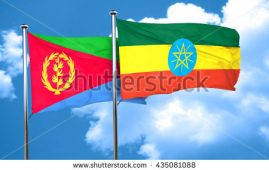The number of votes EPRDF and its allies, which amassed all federal and state legislative seats, received is around 95%, further extrapolation of the data reveal.
The ruling party and its allies won all but 1 federal and 3 state legislative seats that were up for grab in the May 24th election, as the National Election Board of Ethiopia (NEBE) announced last Monday. While not included in NEBE’s announcement, unofficial results of the delayed polls in Gimbo electoral district indicate EPRDF got the four seats contested. Thereby, cementing its 100% win of the seats.
But that’s hardly a news as provisional results released a month ago indicated EPRDF and its allies are heading into a total win.
The proportion of the votes, however, was not clear, as NEBE’s official release was not sufficiently detailed. Based on the data revealed, HornAffairs had estimated last Monday that EPRDF and its allies received about 91% of the total valid ballots cast.
However, further extrapolation of the data show the EPRDF and its allies amassed almost 31 million (about 95%) of the votes cast. On the other hand, the total votes cast for the opposition parties is a little below 2 million (about 4.7%).

The opposition fared better in Addis Ababa and Benshangul-Gumuz, where they got 34.6% and 19.07%, respectively.
In the rest of the States, the votes cast for EPRDF and its allies range from 93.12% (in Oromia) state to 100% (in Gambella and Harari states). An EPRDF ally, GPUDM, was the sole runner in Gambella. However, it is not clear how EPRDF and its ally HNL could have amassed 100% of the votes in Harari, given that three other parties were running.
The data for Ethio-Somali, Afar and Tigrai States indicate that EPRDF/ally received 99.97%, 99.77% and 99.39% of the votes cast, respectively. Whereas in Amhara and Southern Nation Nationalities Peoples, EPRDF got 96.92% and 93.74% of the popular votes, respectively.
These data might put an end to the discussion on changing the electoral system. With less than 5% of the popular votes, opposition parties would not have obtained a seat in the parliament in most democracies with proportional representation electoral system.
It should be noted that the two major opposition parties Medrek and Semayawi (Blue) party have already rejected the election results.

‘EPRDF and allies’ is used to refer to the nine parties that take part in the running of the country.
Formally, the EPRDF (Ethiopian Peoples’ Revolutionary Democratic Front) is made up of four parties – namely, TPLF (Tigrai People’s Liberation Front), OPDO (Oromo People’s Democratic Organization), ANDM (Amhara National Democratic Movement) and SEPDM (Southern Ethiopian People’s Democratic Movement).
Yet, there are five more parties that are publicly referred to as “agar”(partner) parties. These parties receive political guidance and trainings from EPRDF and implement its policy documents. These parties are: ANDP (Afar National Democratic Party), ESDP (Ethiopian Somali Democratic Party), BGDP (Benishangul Gumuz Democratic Party), GPDUM (Gambela Peoples’ Unity Democratic Movement) and HNL (Harari National League).
Each of the nine parties administer their respective States. Though, in case of Harari, OPDO/EPRDF and HNL jointly govern. Addis Ababa is under EPRDF’s Secretariat, while Dire Dawa is run by EPRDF and ESDP jointly.
It is the EPRDF – without the allied parties – that forms the Federal government.
The data on NEBE’s website is not detailed enough and do not perfectly add up, while its officials are not releasing any more data at the moment. Therefore, we arrived at the data shown – in the chart – using the following inputs, among others:
-
Inferences from the vote breakdown for State Councils
-
Inferences from the data for opposition parties that NEBE posted and later removed on its facebook page (which Tsedi lemma of Addis Standard brought to my attention);
-
The voting results for Addis Ababa (which Ethiopian Reporter compiled)
-
Inferences made from the various data bites NEBE had published.
-
Informed guesses to fill the gaps and data mismatches
-
Assumption: Since ballots for both federal and state legislative seats were simultaneously cast, voters would cast their ballots for the same party. Crosschecking calculations and historic data support our assumption albeit slight deviation.
-
We expect a 1-1.5% margin of error, since the numbers did not perfectly add up.
-
Voting data for Dire Dawa city is not included. But would not impact the math.
*******************





